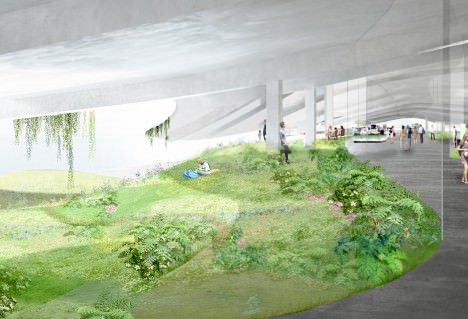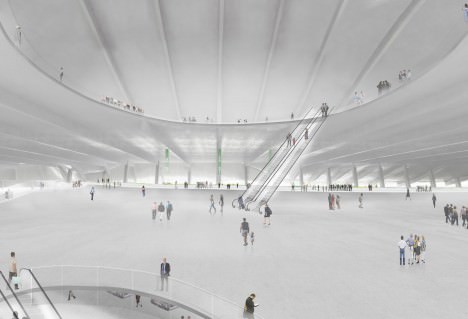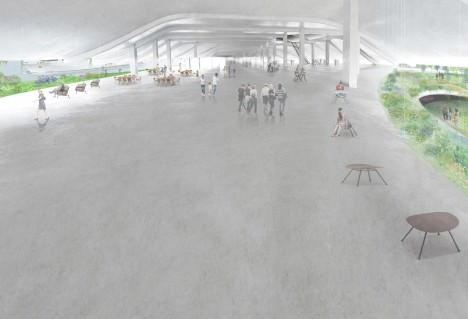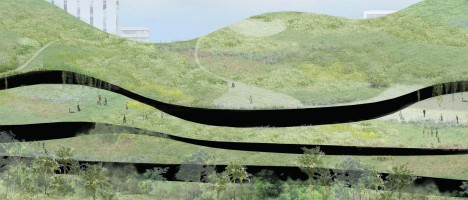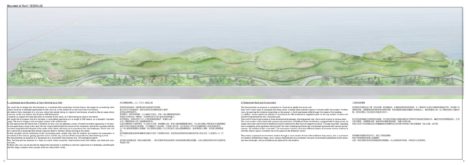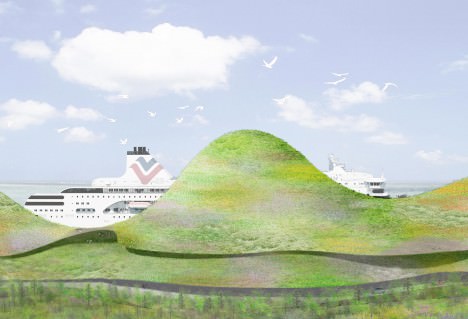
SHARE 石上純也のチームによる台湾の金門港フェリーターミナル設計コンペの勝利案
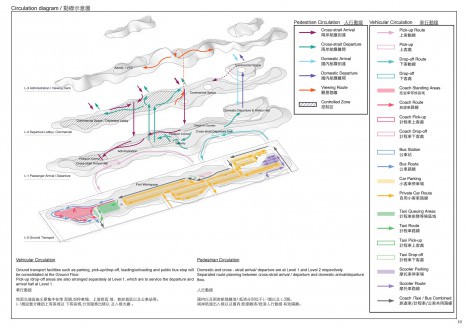
circuration diagram ※画像をクリックで拡大
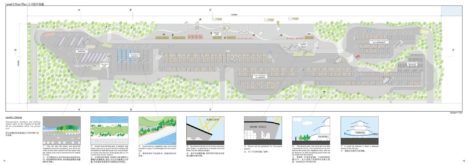
Level-0 floor plan ※画像をクリックで拡大
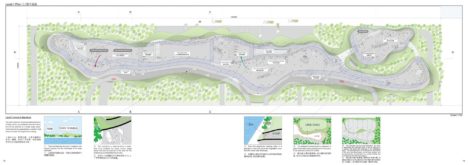
Level-1 floor plan ※画像をクリックで拡大

Level-2 floor plan ※画像をクリックで拡大
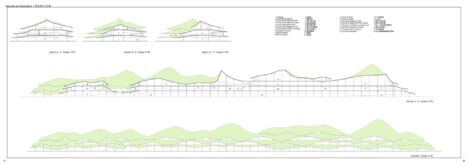
section and elevation ※画像をクリックで拡大
以下、建築家によるテキストです。
First Prize:
Tenderer: Junya Ishigami + Associates / Junya Ishigami Nationality: Japan
Joint Tenderer: Bio Architecture Formosana Architecture / CHING-HWA Chang Nationality: Taiwan
Design Concepts
A Landscape as a Monument, a Ferry Terminal as a Park
We would like to design this ferry terminal as a landmark that symbolizes Kinmen Island. We began by considering what indeed would be a landmark appropriate for this new era, in the context of us who live in the 21st century. We believe that a landmark of a new era, rather than simply being an object of prominence, should be like an oasis where everyone, locals and visitors, feel at peace with themselves. It requires an appeal that naturally leads us towards its this place, as if discovering an oasis in the desert. We would like to propose this ferry terminal, a vast artifact spanning over a length of 500 meters, as a beautiful ‘mountain range.’ We aim to design a rich ecological system in the artificial site.As one approaches the island from a distance by ferry, one can glimpse a series of small mountains appearing on horizon. As one approaches closer to the land, the city reveals itself amidst the crevice of the mountains, and further overlaps with the mountain range behind it situated in the center of the island, allowing one to experience the vast landscape. Those who visit can experience a landscape that deeply engraves itself in memory, before arriving at the island. As this mountain will be continuous to the surrounding park, people who visit the location can explore the succession of mountains at their leisure, gazing upon the ocean and the city, and see off their acquaintances disembarking by boat.
The ferry terminal we propose is a “landscape as a monument” that consists of a rich ecological system. Also, the ferry port we propose is a “Gate as a park” where everyone, local civilians locals and visitors, can meet and communicate.
To those who visit, we will provide the impact of a monument, a multifarious and rich experience of a landscape, and the park with the image of peace where people relief can relieve their minds.
A Three-level Roof and Environment
The ferry terminal we propose is comprised of a three-level (partly four-level) roof. Each roof in each layer is equipped with deep eaves, creating many pleasant spaces of shade within the location. Furthermore,
by opening the windows depending on the season, a fresh sea breeze drifts through the inside of the building. In addition, various plants are planted in accordance to with ameticulous vegetation plan on the top surface of each roof, transforming themselves into a beautiful park. This roof of three levels creates a three-dimensional landscape, allowing people who visit to stroll around in various ways. The cross-section of the lateral side possess characteristics of traditional Asian architecture, equipped with its deep eaves, its shape much akin with Kinmen’s traditional colonial settlements that have an elegant curvature. Through its profile, repeating and overlapping whilst gradually altering itself, the entire building transforms into a landscape bestowed with various countenances.
Its condition is like a mountain. The successive sections of various different shapes of concrete volume continue to form the interior space; it reminds me of the space of the Zhaishan Tunnel.
This means a pleasant environment created through a cross-section format with traditional deep eaves, the a succession of Kinmen’s architectural image, and a unique characteristic as a landmark and park environment established by the mountain-like landscape, will be simultaneously planned for this location.
Team Profile
junya.ishigami+associates
junya.ishigami+associates is an international architecture firm based in Tokyo, Japan. Established by Junya Ishigami in 2004, the firm gained international recognition following the completion of the Kanagawa Institute of Technology’s KAIT Workshop in 2007, which was awarded the Architectural Institute of Japan Prize in 2009. Similar success followed with exhibitions at Venice Architecture Biennales, the latter of which being awarded the Golden Lion for Best Project of the 12th Biennale in 2010. The office has continued to enjoy growing foreign attention for the wide range of design possibilities we explore, from numerous exhibitions and installation projects, such as ‘Ballon’ and ‘Table’, to large scale construction commissions: current projects include a university cafeteria and a garden café in Japan, the redevelopment of the Russian Polytechnic Museum in Moscow, Astugi City urban design and development, and the Park Groot Vijversburg Project in the Netherlands. Regardless of scale, each project is approached from a limitless and open-ended creative perspective to deliver a unique and inspiring outcome.
Bio Architecture Formosana Architecture
Established by Chang Ching-Hwa and Kuo Ying-Chao in 1999, Bio architecture Formosana focuses on design sustainability through Green Architecture to create a living environment coexisting with Nature. Cooperating with Ecoscape Formosana and other qualified professional involvement, Bio Architecture Formosana carries through its philosophy, to integrate humans’ wellbeing into environment protection through professional execution, delicate design, and critical planning. As the name of the firm has suggested, we’ve been highly focus on environmental issues in different area. From reducing urban heat island effect, enhancing bio diversity in man-made environment, to integrating renewable resources and eco-friendly material in building design. Our works cover a wide range of building types, including library, train station, educational, residential and industrial buildings. In 2007, we establish Bio interior Formosana. It has become a platform that we can implement eco-friendly materials and health oriented design in the interior space.

